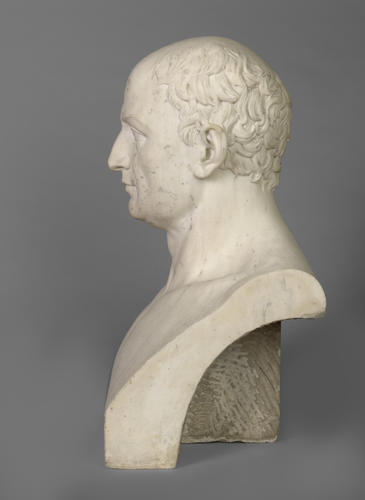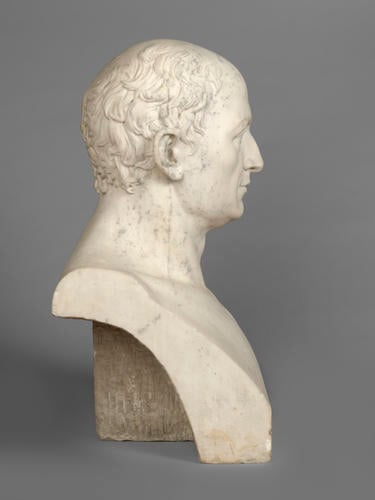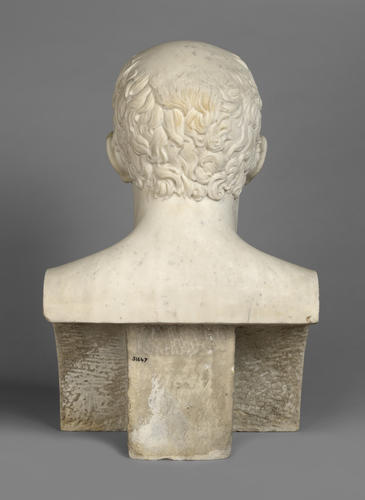John Churchill, 1st Duke of Marlborough 1800-01
White marble | 66.0 x 41.0 x 32.0 cm (whole object) | RCIN 31647




-
A large white marble herm format bust (buste en hermès) of the Duke of Marlborough in the antique style.
The bust of the Duke of Marlborough was commissioned in 1800 by the Minister of the Interior, Napoleon's brother, Lucien, for the decoration of his new galerie de Consuls at the Tuilleries, part of a refurbishment of the area formerly the galerie de Diane for the accommodation of the First Consul (and nominally the Second and Third Consuls). The design was entrusted to the architect Étienne-Chérubin Leconte (c.1760-66-1818) with instructions to complete the work in one month.
The bust was part of a commemorative series of nineteen busts executed by different artists celebrating illustrious ancients and moderns, friends and enemies; the Duke of Marlborough together with Frederick the Great, Prince Eugene of Savoy and Gustavus Adolphus of Sweden amongst the latter. The 'Malbrouk' figure was allocated to the sculptor Pierre-Charles Bridan (1766-1836) whose subsequent likeness to the great general, without customary wig and armour, has been described as 'a conjured-up image of an immortal'. However, on the strength of this piece Bridan went on to carve a bust of Titian for the Louvre, statues for the Pont de la Concorde, reliefs for the Vendôme column and, in 1817, a colossal model of an elephant intended for the Place de la Bastille.
Leconte's decorations for the Tuileries were short lived, making way for new schemes by Percier and Fontaine after the establishment of the First Empire in 1805. The majority of the busts, including that of the Duke of Marlborough, were moved to the Palais de Fontainbleu but it is not recorded as being there in a later inventory of 1825. It is not known when the sculpture entered the Royal Collection; circumstantial evidence points to an acquisition by George IV either during his regency or subsequent reign although it is not in the records of receipts and deliveries maintained by his Inventory Clerk, Benjamin Jutsham, or in the Royal Archives. It may have been a gift presented by an official dealing with the aftermath of Napoleon's second abdication in 1815. It is first recorded in the 1875 Windsor Castle Inventory of Busts.
The Duke of Marlborough was connected with the transatlantic slave trade and benefited from it financially. -
Creator(s)
(nationality)Acquirer(s)
-
Medium and techniques
White marble
Measurements
66.0 x 41.0 x 32.0 cm (whole object)








